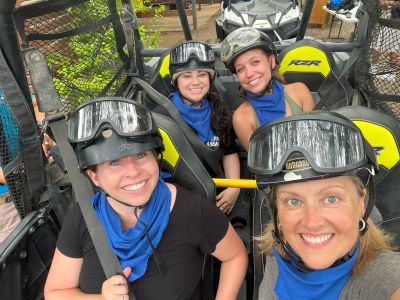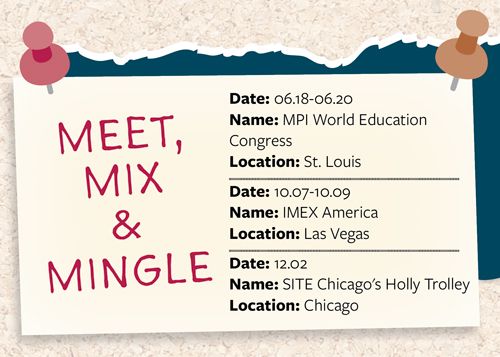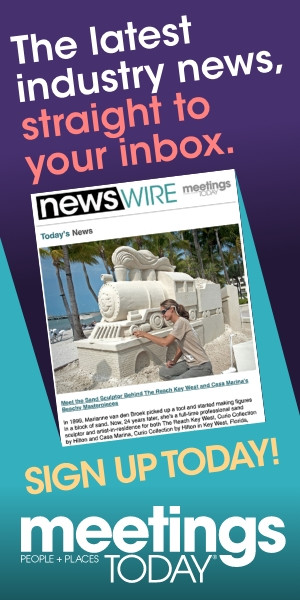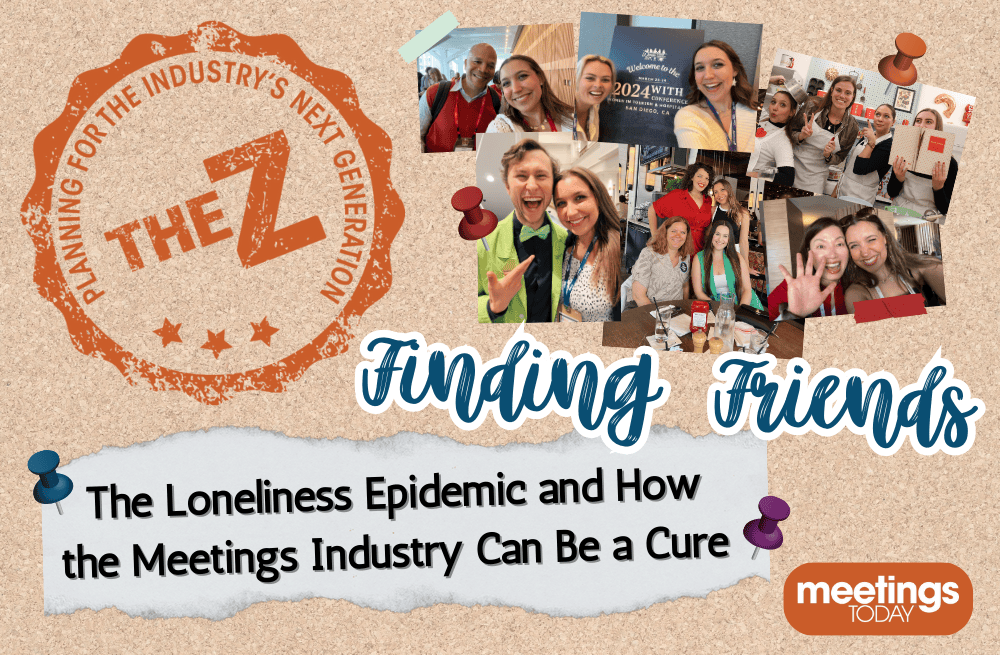Life at times can be a lonely adventure.

Mine has taken me through stages of loneliness ever since I was in grade school, when finding new bullies was easier than finding new friends. That dark cloud of loneliness followed me through high school hallways where I spent four years learning the hard truth of quality over quantity when it comes to who is in your life. I was convinced I found my people in college, but some bonds aren’t strong enough to cross state borders, and when I moved back home after graduation, every familiar face had already moved away.
Growing up, my family would try to help me feel better about my lack of friends by telling me stories about how they made friends at work, chatting with coworkers over coffee or going out for lunch together. They reassured me I’d find my people the same way: in the office. But none of us predicted my office would be a spare bedroom in my parents’ basement.
The only “colleagues” I have to chat over coffee with are two cockapoos. To be fair, I do with them many of the things I would do with friends—split my lunch, take a walk, go for a drive with the windows down, complain about coffee prices in the Starbucks drive through—but there’s no seat at the bar for my dog to join me for an espresso martini, and even if there was, he simply cannot relate to the stress of how bad the economy is these days...
Life will always have its lonely moments, but they’re better spent with good friends at your side. Unfortunately for Gen Z, the realities of remote work and social media’s influence have made good friends hard to find.
Ask most people my age and you’ll discover that I may be lonely, but I’m not alone.
Gen Z is the most connected generation in history—and the loneliest.
[Related: The Z: The Benefits and Appeal of Competitive Socializing]
The Loneliness Epidemic
A study conducted by consumer research company GWI in November 2024 found that eight in 10 Gen Z respondents have felt lonely in the past 12 months, with the top reasons why being low self-esteem (28%), being single (24%) and mental health challenges such as social anxiety (24%).
Social media fuels all three of these fires. It causes amplified feelings of inadequacy and isolation by providing platforms on which users can compare themselves to the “picture-perfect” people they see on their Instagram feeds. How can we be expected to “sell” ourselves to others in hopes of making new friends when social media leads us to believe we aren’t good enough?

Frequent usage of technology like social media has also made it difficult for some Gen Zers to develop social and soft skills such as communication and active listening. The safety of hiding behind a screen may give us the confidence to speak our mind in the comments section, but a dependency on screens prevents some Gen Zers from feeling confident speaking on other occasions, such as when they’re introduced to new people or tasked with making a phone call.
Social media has also shaped how Gen Zers meet significant others. Dating apps like Hinge and Bumble have become Gen Z’s go-to dating method, but who people say they are in their dating profiles is rarely who they turn out to be, and now that AI is everyone’s new favorite toy, the people we meet via dating apps may not even be real people at all.
Basically, social media is the bane of Gen Z’s existence, but it’s also their main tool for staying connected and meeting new people, and that makes finding friends and partners a bit of a gamble. Adding to that challenge is the drastic shift the world made from working in an office to working at home over the years in which Gen Z made its workforce debut, and remote working lifestyles seem to be here to stay.
Can you really blame us for being so lonely?
[Related: The Z: Exploring Social Anxiety in the Meetings and Events Industry]

Connection as a Cure
Post-graduation, when working remotely under my parents’ roof caused an intense bout of loneliness, I knew it was time to rebuild my social life—but how?

I thought the gym would be a good place to start, but I quickly noticed almost everyone wears noise-canceling headphones, and the only reason people talk to you is to ask how many reps you have left.
I searched for local book clubs in my area, and 90% of those are online now, too. I tried one anyway, but because we didn’t put in the effort to meet in person, we stopped putting in the effort to meet at all. Zoom prevented us from connecting beyond the capabilities of our home internet.
I became a member of multiple Facebook groups that were either weird or inactive, downloaded an app called Meetup only for most meetups to get canceled, and worked from a dozen different coffee shops with an outlet strategically placed near me and an empty seat at my table, waiting for someone to bite the bait—but my dog was still my only friend.
Then I attended my first SITE Chicago event and I made 50 new friends at once.
These people were inviting, genuine and authentic, and they were equally as excited to get to know me as I was to get to know them. Shaking hands with one person was the beginning of a domino effect that lasted all evening; everyone knew someone else they wanted to introduce me to—and they were sitting under my nose all along.
I made more friends that evening than I made in an entire year because I finally found an in-person community of genuinely good people with shared passion and an understanding of the power of connection—and I let myself discover the ways my remote job could extend beyond my home office.

The good news, for my fellow Lonely Hearts Club members, is that the worldwide meetings and events industry is full of passionate people who crave connection, and there are countless opportunities to meet them, from local chapter get-togethers to industry-wide conventions (see some of my favorites in my “Connection Calendar” on the left).
Joining SITE Chicago ended up being exactly what I needed to cure my loneliness with local connection. Working in the meetings industry, though, took an insecure, lonely version of me and helped her find love in another country and friends from around the world, who range in everything from their age to their first language, and who all treat her as equal.
Three years ago, my life existed inside the four walls of my parents’ house in the Chicago suburbs, and the world was a massive, scary and lonely place too big for a girl like me. Now, I have the world at my feet and a friend to get coffee with almost everywhere I go.
The meetings and events industry is one magical place.
From one lonely heart to another,
Taylor
Have a question about Gen Z or a topic you’d like to learn more about? Share your thoughts with Taylor at taylor.smith@meetingstoday.com, on Instagram at @tay__writes or on X at @taywrites.
Mission Statement: "The Z: Planning for the Industry’s Next Generation" is a Meetings Today column discussing the meetings and events industry’s newest and youngest members—the incoming Generation Z. Written by Meetings Today’s Taylor Smith, a member of Gen Z herself, The Z explores how to welcome, work with, understand and plan for the industry’s next wave of professionals while serving as a guide for members of Gen Z themselves, planners and attendees alike.
Read more from "The Z: Planning for the Industry’s Next Generation."






